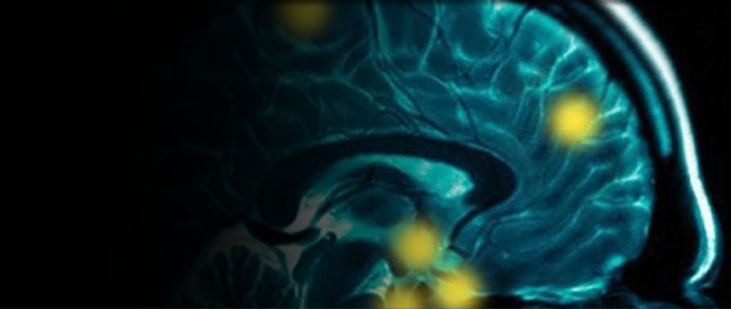By Karen Davis, Professor of Neuroscience and Canada Research Chair in Brain and Behaviour, University of Toronto
The prevalence of chronic pain is staggering. The Institute of Medicine reported in 2011 that 100 million Americans suffer from chronic pain – more than those with heart disease, cancer and diabetes combined. The report also highlights that the annual costs for medical care, lost wages and productivity is more than $600B. These enormous personal and societal costs of chronic pain has driven an effort to “prove” if and how much pain an individual is suffering from for health care providers, insurance companies and legal actors. This is challenging because pain is a personal and subjective experience. Ideally, self report would be sufficient to establish the “ground truth” of the pain experience.
However, some are not able to provide self reports accurately, and the potential financial gain associated with claims of pain has tarnished the perceived authenticity of subjective reports. This has led some to develop brain imaging-based tests of pain – a so-called “painometer.” Yet, current technologies are simply not able to determine whether or not someone has chronic pain. Here, I consider specifically how we could develop a brain-imaging based painometer – and whether we would want to do so. As we ask: “Can we do it?,” we should always ask, “Is this the right thing to do?”
Even as better tests may be developed in the future, every test produces some false positives and false negatives (meaning that some people who have no or little pain could be “positive” for pain and some people with severe pain could be “negative” based on the test). The outcome of a false negative test of pain could be devastating for a patient who truly has intractable pain. It could undercut their access to needed medical treatment, and cause them mental anguish and stigma that can impact personal and employment opportunities.
If we are to try to use brain imaging to measure pain “objectively,” some fundamental concepts must be kept in mind:
- The link between pain and nociception (what we measure with imaging) can be inaccurate. Nociception is the activity of the brain in response to harmful stimuli, while pain is what we feel or experience. Sometimes they are closely related – but sometimes they are unrelated. For example, the brain of a patient under anaesthesia in surgery will show nociception, but the person themself experiences no pain. This works in the other direction, too: A person can feel very real pain even when there is no nociceptive input to the brain.
- Any painometer test must be personalized to the patient. This is because there is vast variability among people in how our brains respond to and “represent” pain. That is: What pain “looks like” in the brain can be different for you and me – there likely will be no “one pattern fits all” brain test.
Further, four main issues are roadblocks to applying current technology for this purpose:
1) The operational definition of a pain biomarker has not yet been established for chronic pain (A “biomarker” is “a characteristic that is objectively measured and evaluated as an indicator of normal biologic processes, pathological processes or pharmacological responses to a therapeutic intervention,” FDA/NIH Consensus Conference in 1999 (Biomarker Definitions Working Group, 2001));
2) Technical factors – including issues related to the hemodynamic nature of fMRI, ceiling effects, spatial and temporal resolution, and statistical decisions;
3) Physiological factors – individual differences in brain circuitry, attentional state/context of the test. There is no specific “pain centre” in the brain. Rather, pain activates brain areas that are also activated by a variety of other systems. So any painometer test must include effective control tests to avoid the reverse inference problem; and
4) The choice of imaging technique to identify a “chronic” pain signature cannot be derived from a simple evoked fMRI paradigm but will likely require more sophisticated approaches. Likely approaches may combine connectivity and machine learning. Thus, a pain-o-meter diagnostic measure must account for individual variability in pain sensitivity, tolerance, coping, biology, with a high degree of technical sensitivity and specificity.
Finally, we must keep in mind why we might want to go through the tremendous cost and technical challenge of developing a “painometer.” A research program to achieve the above likely would take many years and tens, if not hundreds, of millions of dollars. The cost in research hours is large, too: Every hour a researcher devotes to this project is an hour distracted from the issues of the causes of pain and the best ways to treat it, although some insights into basic pain mechanisms could also arise from painometer research.
We must ask ourselves whether we want to develop a painometer because it may be essential to identify, treat, and compensate pain more accurately? Or would we want it because we historically distrust and disbelieve subjective reports of pain, based on fear of fraud and out-dated views of pain as “all in one’s head”? Although I am closing with this, it is perhaps the first question we need to ask – because if we do not start with the right why, we will not get to the right result.
This post is part of the series on pain, brain imaging, and the law sponsored by the Center for Law, Brain & Behavior at Massachusetts General Hospital, the Petrie-Flom Center, and Harvard University’s Mind/Brain/Behavior Initiative. Contributors participated in the conference Visible Solutions: Now Neuroimaging Helps Law Reenvision Pain. For inquiries, please contact the organizer Amanda C. Pustilnik (@apustilnik on Twitter).



